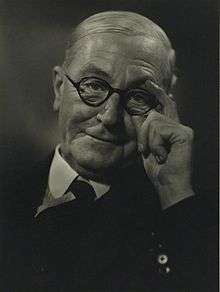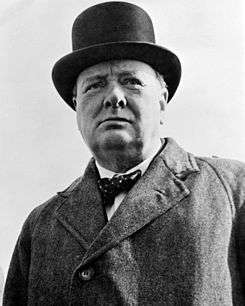Arthur Greenwood
| The Right Honourable Arthur Greenwood CH, PC | |
|---|---|
 | |
| Paymaster General | |
|
In office 9 July 1946 – 5 March 1947 | |
| Prime Minister | Clement Attlee |
| Preceded by | Frederick Lindemann |
| Succeeded by | Hilary Marquand |
| Lord Privy Seal | |
|
In office 27 July 1945 – 17 April 1947 | |
| Prime Minister | Clement Attlee |
| Preceded by | Max Aitken |
| Succeeded by | Philip Inman |
| Minister without Portfolio | |
|
In office 17 April 1947 – 29 September 1947 | |
| Prime Minister | Clement Attlee |
| Preceded by | A. V. Alexander |
| Succeeded by | Geoffrey FitzClarence |
|
In office 11 May 1940 – 22 February 1942 | |
| Prime Minister | Winston Churchill |
| Preceded by | Maurice Hankey |
| Succeeded by | William Jowitt |
| Leader of the Opposition | |
|
In office February 1942 – 23 May 1945 | |
| Prime Minister | Winston Churchill |
| Preceded by | Frederick Pethick-Lawrence |
| Succeeded by | Clement Attlee |
| Deputy Leader of the Labour Party | |
|
In office 26 November 1935 – 25 May 1945 | |
| Leader | Clement Attlee |
| Preceded by | Clement Attlee |
| Succeeded by | Herbert Morrison |
| Minister of Health | |
|
In office 7 June 1929 – 24 August 1931 | |
| Prime Minister | Ramsay MacDonald |
| Preceded by | Neville Chamberlain |
| Succeeded by | Neville Chamberlain |
| Member of Parliament for Wakefield | |
|
In office 21 April 1932 – 9 June 1954 | |
| Preceded by | George Brown Hillman |
| Succeeded by | Arthur Creech Jones |
| Member of Parliament for Nelson and Colne | |
|
In office 15 November 1922 – 27 October 1931 | |
| Preceded by | Robinson Graham |
| Succeeded by | Linton Thorpe |
| Personal details | |
| Born | 8 February 1880 |
| Died | 9 June 1954 |
| Nationality | British |
| Political party | Labour |
Arthur Greenwood, CH, PC (8 February 1880 – 9 June 1954) was a British politician. A prominent member of the Labour Party from the 1920s until the late 1940s, Greenwood rose to prominence within the party as secretary of its research department from 1920 and served as Parliamentary Secretary to the Ministry of Health in the short-lived Labour government of 1924. In 1940, he was instrumental in resolving that Britain would continue fighting Nazi Germany in World War II. He was also noted for problems with alcoholism.[1]
Greenwood was born in Hunslet, Leeds, the son of a painter and decorator. He was educated at the Yorkshire College (which later became the University of Leeds), where he took a B.Sc.
Greenwood was first elected to the House of Commons at the 1922 general election for the constituency of Nelson and Colne in Lancashire. He held the seat until being defeated at the 1931 election, but returned to Parliament the following year, winning a by-election in the Yorkshire constituency of Wakefield. Greenwood continued to represent Wakefield until his death in 1954.
In 1929, Greenwood was appointed Minister of Health and sworn into the Privy Council, a position he held until the collapse of the Labour government in August 1931. During his time at the Ministry of Health, Greenwood raised widows' pensions and enacted large-scale slum clearance.
Greenwood became Deputy Leader of the Labour Party under Clement Attlee. Arguably his most famous moment came on 2 September 1939 when, acting for an absent Attlee, he was called to respond to Neville Chamberlain's ambivalent speech on whether Britain would aid Poland. Preparing to respond, he was interrupted by an angry Conservative backbencher, Leo Amery, who exclaimed "Speak for England, Arthur!"[2]
A flustered Greenwood proceeded to denounce Chamberlain's remarks, to the applause of his colleagues. When the wartime coalition government was formed, Winston Churchill appointed him to the War Cabinet as Minister without Portfolio in 1940. He was generally seen as ineffectual, but in May 1940 he emerged as Churchill's strongest and most vocal supporter in the lengthy War Cabinet debates on whether to accept or reject a peace offer from Germany.[3] Without the vote in favour of fighting on by Greenwood and Clement Attlee, Churchill would not have had the slim majority he needed to do so.[4]
After that his position declined and he resigned in 1943. The same year, he was elected as Treasurer of the Labour Party, beating Herbert Morrison in a close contest.[5]
Until the end of World War II, Greenwood also performed the function of Leader of the Opposition, though he did not receive the salary.
During the Attlee government, he served successively as Lord Privy Seal and Paymaster-General.
Greenwood was cremated at Golders Green Crematorium on 14 June 1954. His ashes and memorial lie in Bay 17 of the East Boundary Wall.[6]
Family
Greenwood's son Anthony Greenwood (later Lord Greenwood) (1911–1982) was an MP from 1946 until 1970, first for Heywood and Radcliffe and later for Rossendale, and a member of Harold Wilson's governments.
References
- ↑ Marr, Andrew: A History of Modern Britain (2009 paperback), page xvi
- ↑ Olson, Lynne. Troublesome Young Men: The Rebels Who Brought Churchill To Power and Helped Save England (Toronto, Anchor Canada, 2008)
- ↑ Jenkins, Roy, Churchill: A Biography (London, Macmillan, 2001), page 601
- ↑ Marr, Andrew: A History of Modern Britain (2009 paperback), page xvii
- ↑ "Greenwood, Arthur", Oxford Dictionary of National Biography
- ↑ Golders Green Crematorium guide notes
External links
- Works by Arthur Greenwood at Project Gutenberg
- Works by or about Arthur Greenwood at Internet Archive
- Hansard 1803–2005: contributions in Parliament by Arthur Greenwood
| Parliament of the United Kingdom | ||
|---|---|---|
| Preceded by Robinson Graham |
Member of Parliament for Nelson and Colne 1922–1931 |
Succeeded by Linton Thorpe |
| Preceded by George Brown Hillman |
Member of Parliament for Wakefield 1932–1954 |
Succeeded by Arthur Creech Jones |
| Political offices | ||
| Preceded by Neville Chamberlain |
Minister of Health 1929–1931 |
Succeeded by Neville Chamberlain |
| Preceded by The Lord Hankey |
Minister without Portfolio 1940–1942 |
Succeeded by Sir William Jowitt |
| Preceded by Frederick Pethick-Lawrence |
Leader of the Opposition 1942–1945 |
Succeeded by Clement Attlee |
| Preceded by The Lord Beaverbrook |
Lord Privy Seal 1945–1947 |
Succeeded by The Lord Inman |
| Preceded by Vacant |
Paymaster-General 1946–1947 |
Succeeded by Hilary Marquand |
| Party political offices | ||
| Preceded by Clement Attlee |
Deputy Leader of the Labour Party 1935–1945 |
Succeeded by Herbert Morrison |
| Preceded by George Lathan |
Treasurer of the Labour Party 1943–1954 |
Succeeded by Hugh Gaitskell |
.svg.png)
